Related Research Articles
Kenneth Anderson Kitchen is a British biblical scholar, Ancient Near Eastern historian, and Personal and Brunner Professor Emeritus of Egyptology and Honorary Research Fellow at the School of Archaeology, Classics and Egyptology, University of Liverpool, England. He specialises in the ancient Egyptian Ramesside Period, and the Third Intermediate Period of Egypt, as well as ancient Egyptian chronology, having written over 250 books and journal articles on these and other subjects since the mid-1950s. He has been described by The Times as "the very architect of Egyptian chronology".
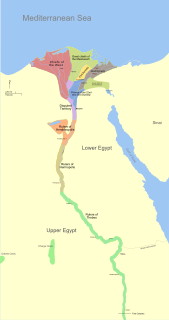
The Third Intermediate Period of ancient Egypt began with the death of Pharaoh Ramesses XI in 1070 BC, which ended the New Kingdom, and was eventually followed by the Late Period. Various points are offered as the beginning for the latter era, though it is most often regarded as dating from the foundation of the Twenty-Sixth Dynasty by Psamtik I in 664 BC, following the departure of the Nubian Kushite rulers of the Twenty-fifth Dynasty by the Assyrians under King Assurbanipal. The concept of a "Third Intermediate Period" was coined in 1978 by British Egyptologist Kenneth Kitchen.

Hedjkheperre Setepenre Takelot II Si-Ese was a pharaoh of the Twenty-third Dynasty of Ancient Egypt in Middle and Upper Egypt. He has been identified as the High Priest of Amun Takelot F, son of the High Priest of Amun Nimlot C at Thebes and, thus, the son of Nimlot C and grandson of king Osorkon II according to the latest academic research. Based on two lunar dates belonging to Takelot II, this Upper Egyptian pharaoh is today believed to have ascended to the throne of a divided Egypt in either 845 BC or 834 BC. Most Egyptologists today, including Aidan Dodson, Gerard Broekman, Jürgen von Beckerath, M.A. Leahy and Karl Jansen-Winkeln, also accept David Aston's hypothesis that Shoshenq III was Osorkon II's actual successor at Tanis, rather than Takelot II. As Aidan Dodson and Dyan Hilton write in their comprehensive book on the royal families of Ancient Egypt:
Takelot II is likely to have been identical with the High Priest Takelot F, who is stated in [the] Karnak inscriptions to have been a son of Nimlot C, and whose likely period of office falls neatly just before Takelot II's appearance.
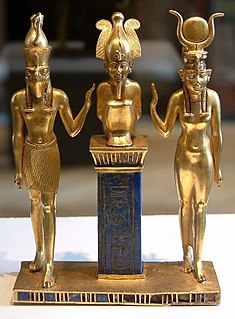
Usermaatre Setepenamun Osorkon II was the fifth king of the Twenty-second Dynasty of Ancient Egypt and the son of King Takelot I and Queen Kapes. He ruled Egypt from approximately 872 BC to 837 BC from Tanis, the capital of that dynasty.

Sekhemkheperre Osorkon I was an ancient Egyptian pharaoh of the 22nd Dynasty. Osorkon's territory included much of the Levant.

The Twenty-third Dynasty of Egypt is usually classified as the third dynasty of the ancient Egyptian Third Intermediate Period. This dynasty consisted of a number of Meshwesh ancient Libyan (Berber) kings, who ruled either as pharaohs or independent kings of parts of Upper Egypt from 880 BC to 720 BC, and pharaohs from 837 BC to 728 BC.

Heqakheperre Shoshenq II or Shoshenq IIa was a pharaoh of the Twenty-second Dynasty of Egypt. He was the only ruler of this dynasty whose tomb was not plundered by tomb robbers. His final resting place was discovered within an antechamber of Psusennes I's tomb at Tanis by Pierre Montet in 1939. Montet removed the coffin lid of Shoshenq II on March 20, 1939, in the presence of king Farouk of Egypt himself. It proved to contain many jewel-encrusted bracelets and pectorals, along with a beautiful hawkheaded silver coffin and a gold funerary mask. The facemask had been placed upon the head of the king. Montet later discovered the intact tombs of two Twenty-first Dynasty kings a year later in February and April 1940 respectively. Shoshenq II's prenomen, Heqakheperre Setepenre, means "The manifestation of Ra rules, the chosen one of Ra."
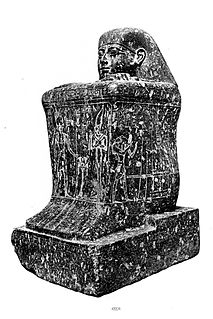
Shoshenq VI is known to be Pedubast I's immediate successor at Thebes based upon the career of the Letter Writer to Pharaoh Hor IX, who served under Osorkon II and Pedubast I. Since Shoshenq VI's prenomen is inscribed on Hor IX's funerary cones, this indicates that Hor IX outlived Pedubast I and made his funeral arrangements under Shoshenq VI instead. His prenomen or royal name was "Usermaatre Meryamun Shoshenq" which is unusual because it is the only known example where the epithet "Meryamun" appears within a king's cartouche. Shoshenq VI's High Priest of Amun was a certain Takelot who first appears in office in Year 23 of Pedubast I.

Aakheperre Setepenre Osorkon the Elder was the fifth king of the 21st Dynasty of Ancient Egypt and was the first Pharaoh of Meshwesh origin. He is also sometimes known as Osochor, following Manetho's Aegyptiaca.

Usermaatre Setepenamun Osorkon III Si-Ese was Pharaoh of Egypt in the 8th Century BC. He is the same person as the Crown Prince and High Priest of Amun Osorkon B, son of Takelot II by his Great Royal Wife Karomama II. Prince Osorkon B is best attested by his Chronicle—which consists of a series of texts documenting his activities at Thebes—on the Bubastite Portal at Karnak. He later reigned as king Osorkon III in Upper Egypt for twenty-eight years after defeating the rival forces of Pedubast I/Shoshenq VI who had apparently resisted the authority of his father here. Osorkon ruled the last five years of his reign in coregency with his son, Takelot III, according to Karnak Nile Level Text No. 13. Osorkon III's formal titulary was long and elaborate: Usermaatre Setepenamun, Osorkon Si-Ese Meryamun, Netjer-Heqa-waset.

Usermaatre Osorkon IV was an ancient Egyptian pharaoh during the late Third Intermediate Period. Traditionally considered the last king of the 22nd Dynasty, he was de facto little more than ruler in Tanis and Bubastis, in Lower Egypt. He is generally – though not universally – identified with the King Shilkanni mentioned by Assyrian sources, and with the biblical So, King of Egypt mentioned in the second Books of Kings (17:4).

The High Priest of Amun or First Prophet of Amun was the highest-ranking priest in the priesthood of the ancient Egyptian god Amun. The first high priests of Amun appear in the New Kingdom of Egypt, at the beginning of the Eighteenth Dynasty.
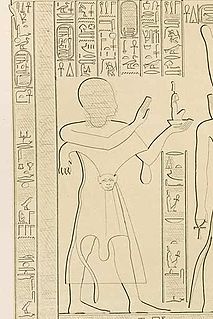
Nimlot C was a High Priest of Amun at Thebes during the reign of pharaoh Osorkon II of the 22nd Dynasty.
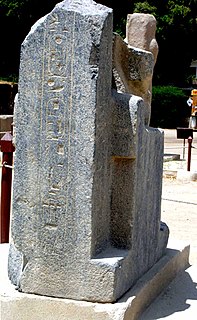
Pedubast II was a pharaoh of Ancient Egypt associated with the 22nd or more likely the 23rd Dynasty. Not mentioned in all King lists, he is mentioned as a possible son and successor to Shoshenq V by Aidan Dodson and Dyan Hilton in their 2004 book, The Complete Royal Families of Ancient Egypt. They date his reign at about 743–733 BC, between Shoshenq V and Osorkon IV.

Karomama II was an ancient Egyptian queen, Great Royal Wife of pharaoh Takelot II of the 23rd Dynasty of Egypt.
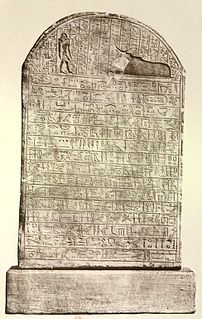
Karomama (A), also known as Karamat, was an ancient Egyptian queen consort. She is only known from the stela of Pasenhor through which is known that she was the wife of pharaoh Shoshenq I and mother of pharaoh Osorkon I.

Maatkare B was a wife of pharaoh Osorkon I and the mother of the High Priest of Amun Shoshenq C. Maatkare was the daughter of Psusennes II.

Tashedkhons(u) was a wife of Pharaoh Osorkon I and the mother of Pharaoh Takelot I. She is known from the Pasenhor stela. Tashedkhonsu is given the title God's Mother on the stela. A shabti inscribed for Tashedkhonsu was found in the tomb of Takelot II, who was a distant descendant.
Kapes was a wife of Pharaoh Takelot I and the mother of Pharaoh Osorkon II. Kapes is mentioned on the Pasenhor stela found in the Serapeum of Saqqara. On the stela she has the title of God's mother. Kapes is also known from her son Osorkon II's tomb in Tanis. No further titles are mentioned for Kapes in her son's tomb. A lamentation text in her son's tomb end with the line "ir n.f K3pws" which translates to "Kapus did this for him".

TadibastIII was an ancient Egyptian queen consort during the late Third Intermediate Period, around the second half of the 8th century BCE.
References
- ↑ Dodson, Aidan and Hilton, Dyan. The Complete Royal Families of Ancient Egypt. Thames & Hudson. 2004. ISBN 0-500-05128-3
- ↑ Kitchen, Kenneth A. The Third Intermediate Period in Egypt, 1100-650 B.C. (Book & Supplement) Aris & Phillips. 1986 ISBN 978-0-85668-298-8
| | This Ancient Egypt biographical article is a stub. You can help Wikipedia by expanding it. |